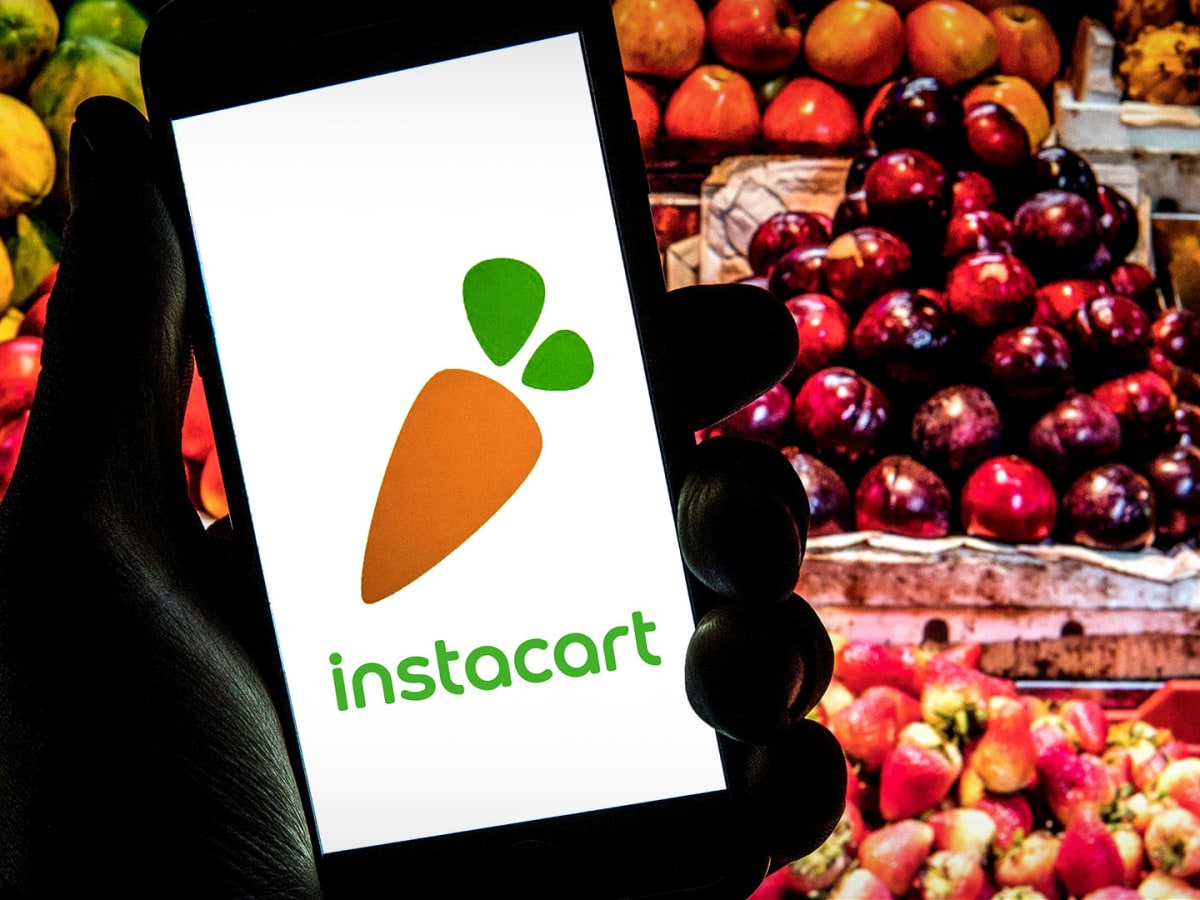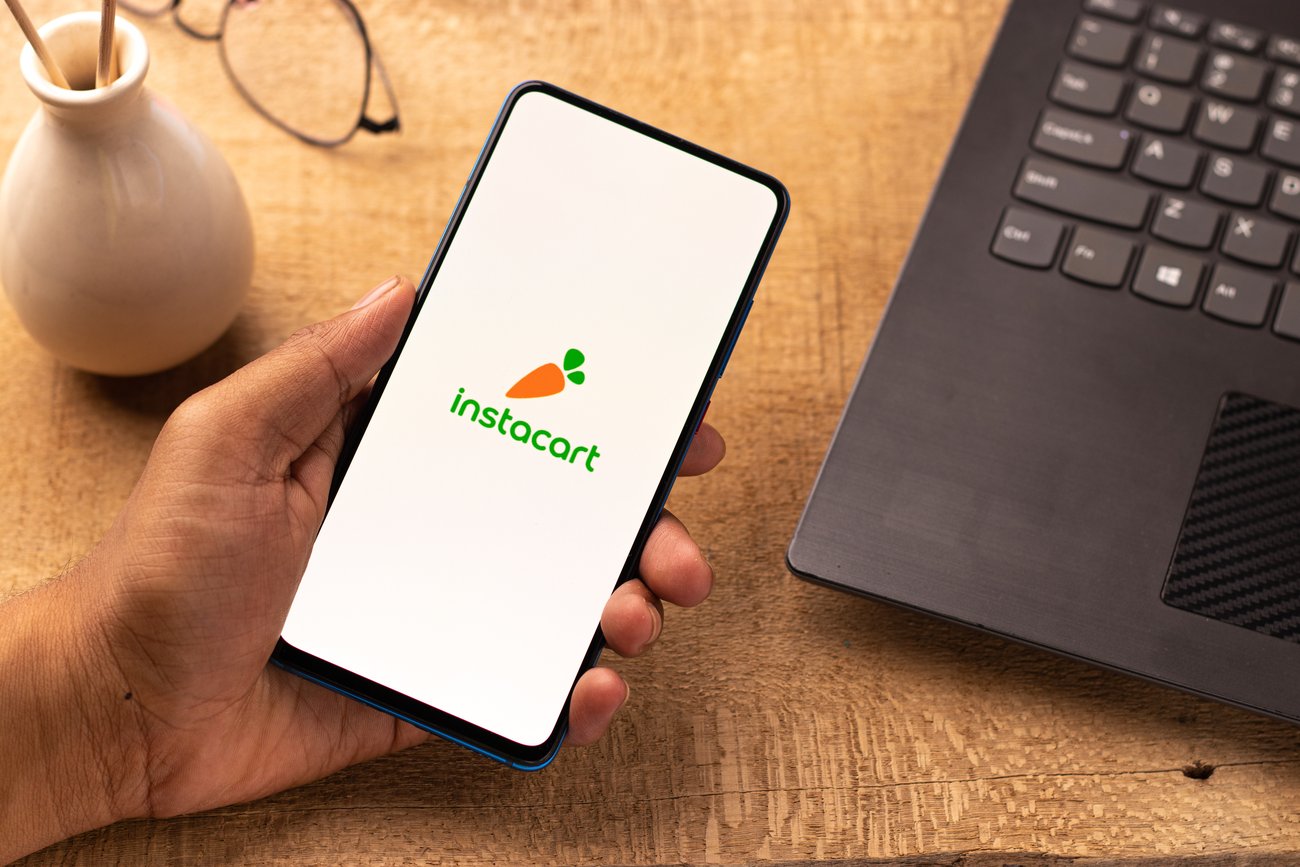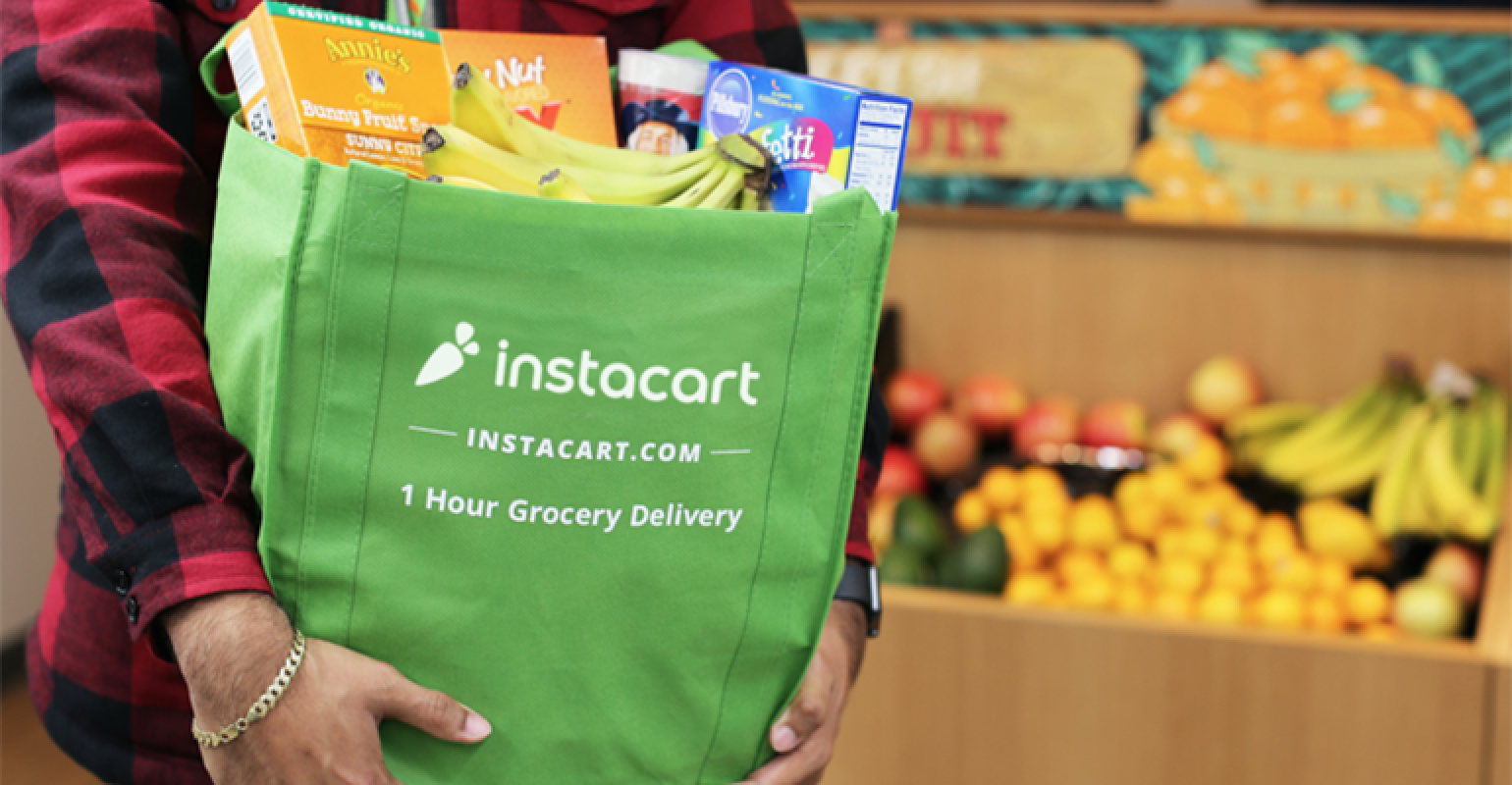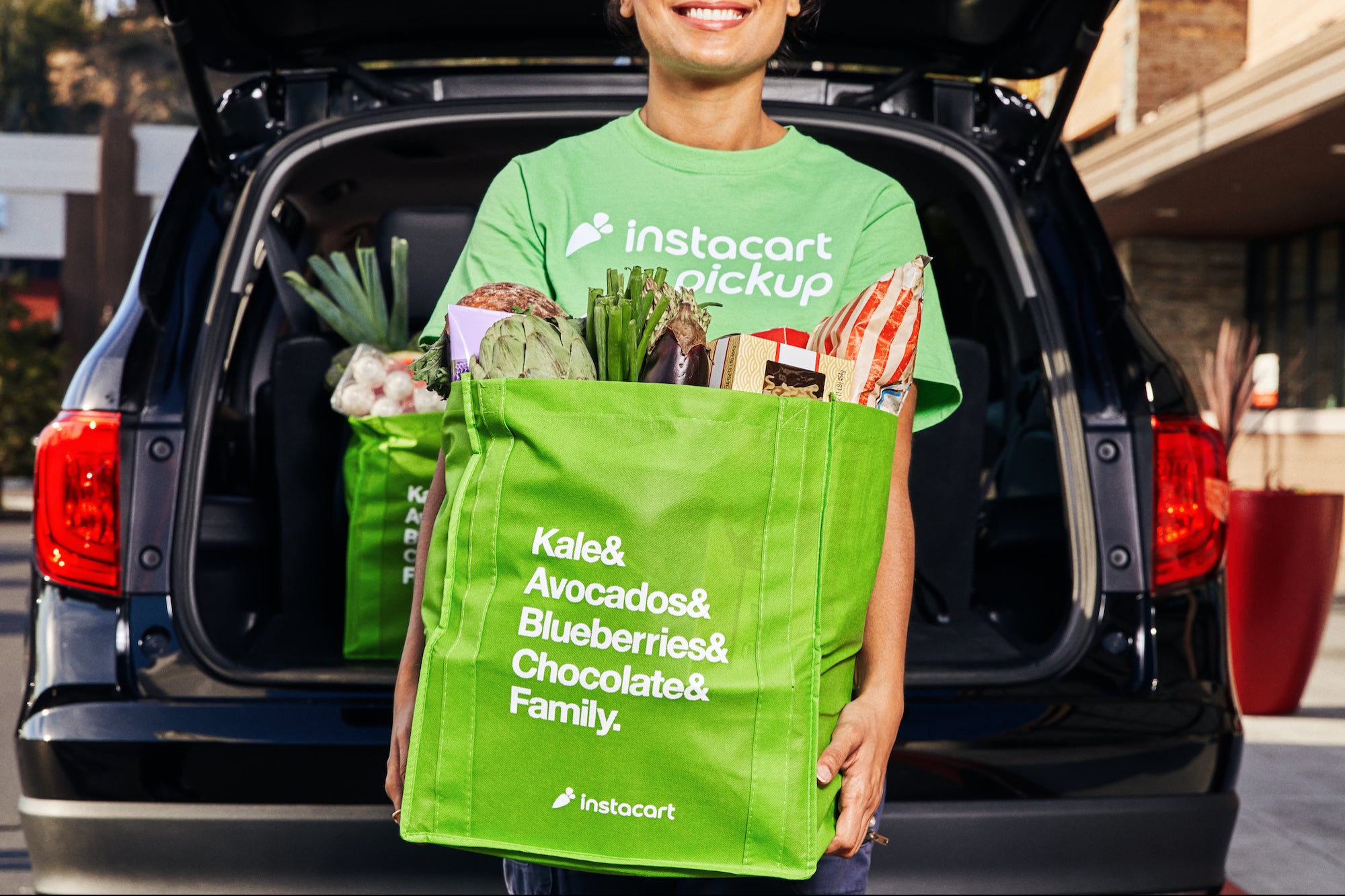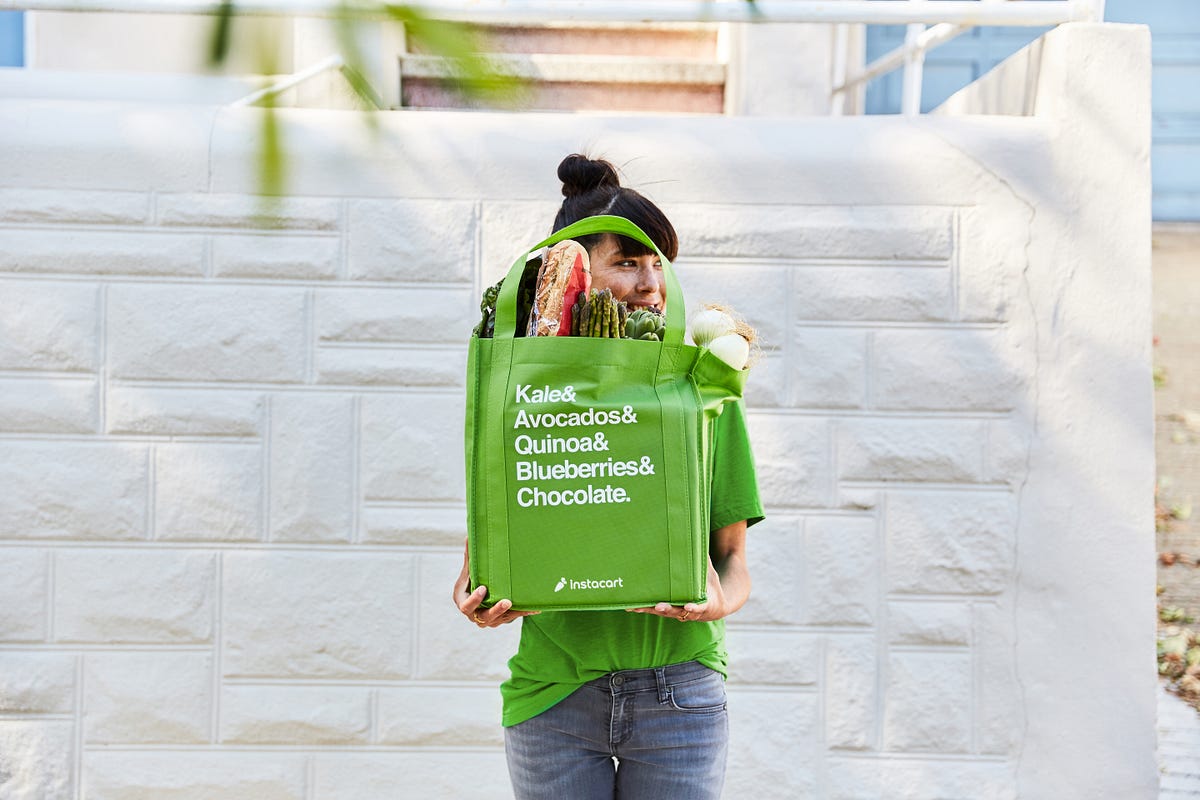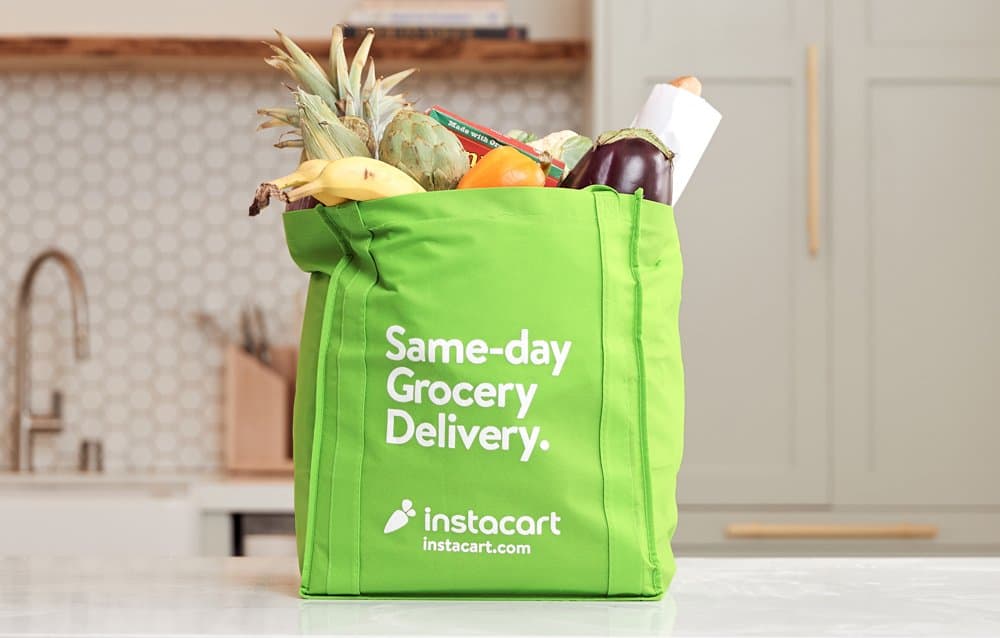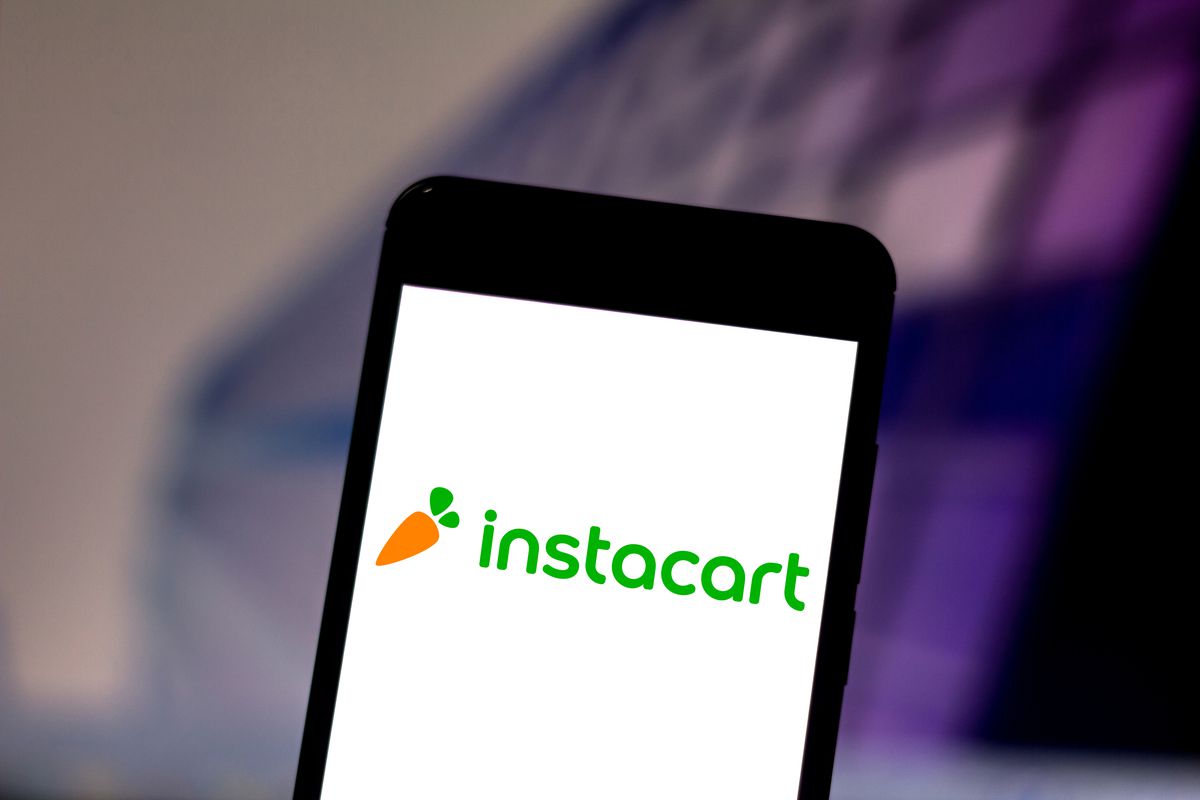
In the age of rapid technological advancements and the ever-increasing demand for convenience, services like Instacart have revolutionized the way people approach grocery shopping. The question persists:Is Instacart worth it? This article delves into the pros and cons, helping readers weigh the merits and drawbacks of using this popular online grocery delivery service.
Instacart, with its promise of time-saving, convenience, and variety, has emerged as a savior for many, simplifying the grocery shopping experience. However, the cost implications, product quality concerns, and potential drawbacks raise valid considerations for those contemplating whether the convenience outweighs the associated expenses and potential trade-offs.
What Is Instacart?
Instacart is an on-demand grocery delivery and pickup service that allows users to order groceries and other essential items online from local stores. Customers can place their orders through the Instacart website or mobile app, selecting items they need from a variety of stores in their area, including supermarkets, specialty stores, and even wholesale retailers.
Once an order is received, a personal shopper, hired by Instacart, goes to the selected store, picks up the items, and delivers them to the customer's specified location. Users can choose to have their groceries delivered to their doorstep within a few hours or schedule a pickup at the store.
Instacart offers a wide selection of products, allowing users to shop from multiple stores in one order. The service provides convenience, particularly for those who find it challenging to visit the store themselves due to time constraints, health issues, or other limitations.
Customers can browse and select items from various departments, including fresh produce, pantry staples, household goods, personal care products, and more. The platform also offers features such as the ability to specify preferences, make notes for the shopper, and request specific brands or items.
However, while Instacart simplifies the shopping experience, it's important to note that the service usually includes additional fees such as delivery charges, service fees, and potential tips for the shopper. Additionally, there might be differences in product prices compared to in-store prices, and customers might experience occasional substitutions for items that are out of stock.
How Does Instacart Work?
Instacart operates through a straightforward process that involves several steps:
Order Placement
- App or Website -Users start by accessing the Instacart platform via the mobile app or website. They create an account, input their location, and choose from a selection of local stores available for delivery or pickup.
- Shopping List -Customers can browse through different categories and products, adding the items they need to their virtual shopping cart.
Customization And Preferences
Customers can leave notes for the shopper, specify preferences, and even choose replacement options if a particular item is unavailable.
Checkout
Once the shopping is complete, users proceed to checkout, review their order, and select a delivery time or pickup slot.
Shopper Assignment
Instacart assigns a personal shopper to the order. This shopper receives the order details and heads to the chosen store to fulfill the request.
Shopping Process
At the store, the shopper collects the items on the list, following the customer's preferences and special notes.
Communication And Substitutions
If any items are out of stock, the shopper may communicate with the customer to propose suitable replacements or follow the pre-selected alternatives.
Checkout And Payment
After collecting all the items, the shopper proceeds to the checkout, making the payment using Instacart's account.
Delivery Or Pickup
For delivery orders, the shopper delivers the groceries to the customer's specified location. For pickup orders, the customer visits the chosen store and collects their prepared order.
Completion And Feedback
Once the delivery or pickup is completed, customers can rate and provide feedback on the service and the quality of their order.
Payment And Charges
Users are charged for the cost of groceries, plus service fees, and delivery charges (if applicable), and have the option to tip the shopper.
Important Points To Note
- Variety and Options -Instacart allows users to shop from various stores, offering a wide range of products and brands.
- Delivery Time -Customers can select delivery times based on their convenience, with options for same-day delivery in many areas.
- Additional Fees -There might be additional costs associated with the service, such as delivery fees, service fees, and potential tips for the shopper.
- Quality and Substitutions -Sometimes, shoppers might need to make substitutions for items that are unavailable, which customers can either accept or reject.
Is Instacart Worth It?
Instacart, in essence, offers a balancing act between convenience and cost. For those valuing time-saving and the luxury of having groceries delivered straight to their doorstep, the service is a game-changer. The added cost incurred through delivery fees and service charges might be a negligible trade-off for the sheer comfort it provides.
However, if you're a meticulous shopper who prefers handpicking each item or is on a strict budget, the traditional in-store grocery experience might better suit your needs. Instacart's pricing, occasional item markups, and additional fees might not align with a penny-pinching approach.
Nevertheless, the service undeniably revolutionizes the grocery shopping experience, offering a convenient solution for those willing to pay a premium for time and ease. It's a modern convenience worth exploring. By leveraging it strategically, it has the potential to simplify your life significantly.
So, the next time you're debating a trip to the store, consider the allure of Instacart. With its promise of convenience, time-saving, and the joy of shopping from the comfort of your couch, it might just be the solution you've been searching for. Is Instacart worth it? Give it a try and experience the convenience firsthand! Happy shopping!
How Much Do Instacart Shoppers Make?
The earning potential for Instacart shoppers varies based on their specific role, location, and the number of hours worked. According to reviews from Instacart shoppers, the pay range generally falls between $12 to $20 per hour.
In-store shoppers are paid hourly, with Glassdoorestimating their average pay between $15 to $18 per hour, while full-service shoppers are compensated per order. Full-service shoppers typically earn between $15 to $20 per hour when calculating the weekly earnings divided by the hours worked.
Here are various examples from Instacart shopper reviews on Reddit:
- Working 20 hours a week can yield earnings ranging from $250 to $350, equating to $12.50 to $17.50 per hour.
- A 4 to 5-hour workday can result in daily earnings of $100, amounting to $20 to $25 per hour.
- A consistent 20-hour workweek might yield a steady $400, averaging $20 per hour.
- Earnings between $100 to $300 per day were reported for 5 to 6-hour workdays, equating to $16.50 to $60 per hour.
- Even shorter shifts of 3 to 4 hours might generate $70 per day, reflecting an hourly range between $17.50 and $23.
For full-service shoppers, making $100 per day in 4 to 6-hour shifts is plausible, potentially amounting to $500 or more per week. This earning capacity extends further, suggesting the possibility of making $2,000 per week with diligent work. Glassdoor reviews support these figures, with reported monthly earnings ranging from $1,000 to $8,000, averaging at around $2,775 per month.
The potential for earning $2,000 per month or more aligns with the experiences and feedback shared by Instacart shoppers. However, it's essential to note that these figures may fluctuate based on various factors, including order volume, tips, location, and individual shopper efficiency.
Where Can You Use Instacart?
Instacart offers its services in a diverse range of locations, catering to both major cities and smaller urban and suburban areas across the United States and Canada. Customers can access Instacart services in various cities, including but not limited to New York City, Los Angeles, Chicago, Toronto, San Francisco, and many others.
The availability of Instacart in these regions is made possible through partnerships with local grocery stores, supermarkets, specialty stores, and wholesale retailers. This partnership network allows customers to access a wide selection of stores and products through the Instacart platform.
Some prominent partnered retailers where customers can shop using Instacart include well-known names like Target, ALDI, Price Chopper, Costco, Dollar Tree, Walgreens, CVS, Sephora, The Vitamin Shoppe, and 7-Eleven.
The diversity of options available on Instacart is extensive, covering various categories such as grocery, convenience items, ready meals, gifts, alcohol, beauty products, bulk items, general retail, pharmacy essentials, and even pet supplies.
This wide variety of stores and categories caters to the diverse shopping needs of customers, allowing them to access a range of products, from everyday grocery essentials to specialty items, all through the convenience of the Instacart platform.
How Much Does Instacart Cost?
Product Prices
Grocery prices might differ from in-store prices due to occasional markups, promotions, or discounts specific to the Instacart platform.
Delivery Fees
- Instacart charges a base delivery fee, which varies based on the order size, time of delivery, and specific circumstances.
- Same-day orders over $35 have a starting delivery fee of $3.99.
- Different fees apply for one-hour deliveries, club store deliveries, and orders under $35.
- Delivery fee details are clearly indicated at the checkout when selecting the delivery window.
Service Fees
Service fees cover the operational costs of the platform, such as customer support and software development.
Tipping
Tips, while optional, are customary and contribute to the shopper's income. Customers often tip the Instacart shopper for their service.
Membership (Instacart Express)
Instacart Express is an optional subscription service that offers benefits like free delivery on orders over a specified amount, reduced service fees, and other perks for a monthly or annual fee.
Additional Details
- Minimum Order for Delivery -All orders must meet a minimum threshold of $10 to be eligible for delivery.
- Instacart+ Members -Members receive free delivery on orders over $35 from a single retailer.
- Priority Fees -Available for both Instacart+ and non-Instacart+ customers, priority fees are applied when choosing priority delivery windows during checkout. These fees allow customers to select shorter delivery windows (as fast as 60 minutes or less) and will vary based on shopper availability, starting at $2. These fees are clearly marked and may not be available for all orders.
Instacart's cost structure varies depending on several factors, but the service provides various options and flexibility for customers to choose delivery windows, reduce fees, and access additional benefits through membership programs.
How Does Instacart Compare With Other Delivery Services?
Instacart, as a grocery delivery and pickup service, competes in a market with various other delivery services, each with its unique features, pros, and cons. Here's a comparison with a few similar services:
Instacart Vs. Other Grocery Delivery Services
- Shipt -Shipt, owned by Target, offers a membership-based grocery delivery service. It's known for its straightforward pricing and is available in various cities. Shipt's key difference lies in its membership model compared to Instacart's fee-per-order structure.
- Amazon Fresh/Whole Foods Delivery -Amazon Fresh delivers groceries from Whole Foods and Amazon. The service is well-integrated with Amazon Prime, offering free delivery for Prime members, but the selection might be more limited compared to Instacart's multiple-store options.
Instacart Vs. General Delivery Services
- DoorDash/Uber Eats/Postmates -These services specialize in meal delivery from restaurants but have expanded to include grocery delivery. They often offer fast delivery times but may have a more limited selection compared to dedicated grocery services like Instacart.
- Walmart Grocery -Walmart offers its own grocery delivery service, allowing customers to order groceries online for delivery or pickup. Its pricing might differ from Instacart, and the selection is limited to Walmart's inventory.
Comparison Factors
- Store Selection -Instacart often offers multiple-store options, providing a broader selection compared to some competitors.
- Pricing -Fees, delivery charges, and membership structures vary between services, influencing the overall cost for customers.
- Delivery Times -Different services might have varying delivery windows, which can impact convenience for users.
- Quality and Customer Service- User experience, shopper interactions, and the overall quality of service can vary among different platforms.
Instacart Shopper Pros & Cons
Pros Of Being An Instacart Shopper
- Flexibility -Instacart offers flexible work hours, allowing shoppers to set their schedules and work when convenient.
- Variety of Tasks -Shoppers can choose between shopping and delivering or focus solely on shopping, providing options for different preferences and abilities.
- Potential Earnings -Shoppers can potentially earn based on the number of orders completed, tips received, and peak hour bonuses, giving an opportunity for increased income.
- Independence -Working as a contractor, shoppers have a degree of independence in how they complete their tasks, make decisions about shopping routes, and more.
Cons Of Being An Instacart Shopper
- Inconsistent Earnings -Income can fluctuate due to factors like varying order volumes, tips, and seasonal demand, making earnings less predictable.
- Expenses -Shoppers are responsible for their own vehicle, gas, and other expenses related to fulfilling orders, which can impact overall earnings.
- Physical Demands -Shopping and delivering can be physically demanding, especially during busy periods or with larger orders, which might not suit everyone.
- Reliance on Tips -Since tips often make up a significant portion of earnings, there might be concerns about inconsistent or inadequate tipping from customers.
Understanding both the positive aspects and potential challenges can help individuals decide if becoming an Instacart shopper aligns with their preferences, availability, and financial expectations.
Is Working For Instacart Worth It?
Determining whether working for Instacart is a worthwhile endeavor requires a deep dive into the financial details. To evaluate the viability, one must scrutinize the actual earnings after considering expenses and compare the take-home pay to that of similar platforms.
Understanding Overhead Expenses:
Most gig-based work involves various overhead expenses. For delivery-driving gigs, it's prudent to set aside roughly 35% of earnings to cover these costs, leaving about 65% as profit. If, for instance, the average long-term pay is $20 per hour, the effective take-home pay equates to approximately $13 per hour.
Fuel - 10% Of Earnings
- Instacart doesn't cover fuel costs, necessitating drivers to allocate around 10% of their earnings for gas expenses.
- Gas prices fluctuate, affecting the amount spent, and drivers commonly budget around 10% for fuel.
Maintenance - 10% Of Earnings
- Regular vehicle maintenance is crucial due to the wear and tear associated with delivery driving.
- A common practice involves setting aside a dollar for future maintenance for every dollar spent on gas, equating to another 10% of expenses.
Vehicle Necessity
Instacart demands access to a car for full-service shoppers. The nature of grocery deliveries practically mandates a vehicle, implicating inevitable expenses.
Taxes - 15% Of Earnings
- As an independent contractor, Instacart doesn't withhold taxes, obliging workers to report and pay them independently.
- Tax deductions for expenses such as gas and maintenance ease the burden, but planning for around 15% of earnings is recommended.
Financial Perspective
- The apparent take-home pay after accounting for fuel, maintenance, and taxes totals around $13 per hour, a notable decrease from the anticipated $20 hourly rate.
- Contextually, similar gig platforms entail comparable expenses. None of Instacart's competitors cover gas expenses, and the $13 hourly rate still remains relatively higher than the federal minimum wage.
Worth Assessment
The question of whether the $13 per hour rate is "worth it" ultimately rests on individual judgment. While it represents a substantial income compared to the federal minimum wage, its viability varies across states. With Instacart's low entry barrier, you can test the waters and decide if the endeavor aligns with your preferences or if your efforts might be more fruitful elsewhere.
How To Become An Instacart Shopper
Becoming an Instacart Shopper involves several steps
Meet The Basic Requirements
Age and Eligibility -You need to be at least 18 years old and legally eligible to work in the United States or Canada.
Application Process
- Sign Up -Visit the Instacart Shopper website or download the Instacart Shopper app.
- Create an Account -Create a shopper account by providing the necessary personal information and details.
- Background Check -Consent to and pass a background check, which typically includes a review of your driving record and criminal history.
Complete The Onboarding Process
- Complete Paperwork -Once accepted, finish the required paperwork and agree to Instacart's terms and conditions.
- Attend Orientation (if required) -Depending on your location, you might need to attend an in-person or online orientation session.
Obtain Necessary Equipment
- Smartphone -You'll need a smartphone to access the Instacart Shopper app, through which you'll receive orders and communicate with customers.
- Vehicle (if doing delivery) -If you're doing deliveries, you'll need a reliable vehicle to transport the groceries.
Start Shopping
- Accept Orders -Once approved, you can start receiving and accepting orders through the app.
- Shop and Deliver -Follow the provided shopping list, communicate with customers if necessary, and deliver the items within the specified timeframe.
Understand The Shopper Guidelines
Familiarize Yourself -Understand Instacart's guidelines, best practices, and policies for shoppers, including handling orders, customer interactions, and maintaining quality service.
Additional Tips
- Efficiency and Customer Service -Providing efficient service, accurate shopping, and excellent customer service can lead to positive customer reviews and potentially more orders.
- Stay Informed -Keep updated with any changes, updates, or new guidelines from Instacart to ensure compliance and smooth operations.
What Is It Like To Work For Instacart?
Entering the realm of working as an Instacart shopper, whether as a full-service driver or in-store shopper, involves several considerations beyond the apparent freedom and flexibility. Understanding the nuances of the role and its potential impact is vital to making an informed decision.
For those inclined towards full-service shopping and delivery, the appeal often lies in the sense of autonomy and a pseudo-entrepreneurial role. However, delving deeper, one must acknowledge the toll it takes on your vehicle. Daily deliveries inevitably heighten wear and tear, necessitating increased maintenance and future costs. The unpaid hours spent in traffic, finding parking spots, and navigating long checkout lines during peak hours are additional aspects to factor into your time and energy investment.
Contrarily, in-store shopping might present a different set of challenges. While the monotony of this role could potentially affect motivation, dealing with crowded supermarkets during peak times adds stress. As a shopper, your experience in these situations directly impacts your perception of the job's demands.
Assessing whether the advantages outweigh the drawbacks is crucial. The freedom, flexibility, and independent nature of the job might be alluring, but the daily practicalities and their impact on your vehicle and personal stress levels should not be overlooked.
Prior to committing, seeking insights from current and former Instacart shoppers in your area can provide invaluable first-hand information about the job's realities and the availability of work in your region. Reviewing candid and detailed testimonials on reputable platforms like Glassdoor and Indeed offers further clarity on what to expect.
If the role as an Instacart shopper fails to captivate your interest or meet your expectations, rest assured that various opportunities are available, some offering higher earning potential and more stability. Taking time to explore other avenues that align better with your careeraspirations is a prudent step.
Other Jobs Like Instacart To Try
If you're interested in jobs similar to Instacart or exploring alternative options in the gig economy, consider these popular platforms:
Grocery Delivery And Shopping
- Shipt -Similar to Instacart, Shipt offers grocery delivery services with a membership-based model.
- Amazon Flex -With Amazon Flex, you can deliver Amazon packages, groceries, or other items, offering flexibility and potential earnings.
Food Delivery
- DoorDash -Deliver meals from various restaurants to customers' doorsteps, with flexibility in choosing your own schedule.
- Uber Eats -Deliver food from restaurants partnering with Uber Eats, allowing you to earn by delivering meals.
Package And Courier Services
- UPS or FedEx (Independent Contractors) -Some individuals work as independent contractors for delivery services like UPS or FedEx, offering delivery of packages and items.
- Postmates -Deliver a variety of goods, including food, groceries, and other items, providing flexibility in working hours.
Task-Based Gig Platforms
- TaskRabbit -Perform various tasks such as handyman work, moving, cleaning, or general assistance based on your skills and availability.
- Fiverr -Offer your services, skills, or expertise in various categories, such as freelance writing, graphic design, or digital marketing.
Ride-Sharing
Uber or Lyft -Drive passengers to their destinations, offering flexibility in working hours and potentially earning through ride-sharing services.
Considerations
- Flexibility -Most of these platforms offer flexible work hours, allowing you to set your own schedule.
- Varied Earnings -Earnings might fluctuate based on factors like demand, time worked, and tips received.
- Job Type and Preferences -Consider your skills, preferences, and the nature of the job to find the best fit for your interests and availability.
Is Instacart Worth It? - FAQs
What Is The Downside Of Instacart?
- Vehicle Wear and Tear -Continuous use for deliveries contributes to increased wear and tear on your vehicle, leading to higher maintenance costs.
- Potential Stress -In-store shoppers may encounter stress during peak times in crowded supermarkets. Full-service shoppers might experience unpaid hours in traffic and long checkout lines.
- Variable Income -Earnings are subject to fluctuations based on factors like order volume, tips, and seasonal demand.
- Expenses Not Covered -Instacart doesn't reimburse for expenses like gas, necessitating drivers to cover fuel costs themselves.
Can You Make $1000 A Week With Instacart?
While some full-service shoppers report earnings that could potentially reach $1,000 a week, achieving this income consistently may be challenging due to factors like order volume, tips, and personal availability. Individual experiences vary widely, and reaching a consistent $1,000 per week is not guaranteed for all shoppers.
Does Instacart Pay For Gas?
Instacart does not reimburse or cover gas expenses for its shoppers. Shoppers are responsible for their fuel costs, which are part of the overall expenses incurred while performing deliveries.
Which Is Better DoorDash Or Instacart?
The comparison between DoorDash and Instacart largely depends on personal preferences and work style. DoorDash focuses on food delivery, providing flexibility in working hours and potentially quicker earnings. Instacart, on the other hand, caters to grocery shopping and deliveries, offering a wider range of products but potentially involving more wear and tear on your vehicle due to heavier loads and diverse locations.
Conclusion
The question "Is Instacart Worth It?" doesn't have a one-size-fits-all answer. The decision to use Instacart depends on individual needs, preferences, and the value placed on convenience. For some, the service might prove invaluable, providing a much-needed solution to the time-consuming task of grocery shopping.
On the other hand, for those prioritizing cost-effectiveness and particular about product quality and selection, the drawbacks may outweigh the convenience. Ultimately, an informed decision, considering both the advantages and disadvantages, will help users determine if the convenience and ease of Instacart justify the associated costs and potential trade-offs.
